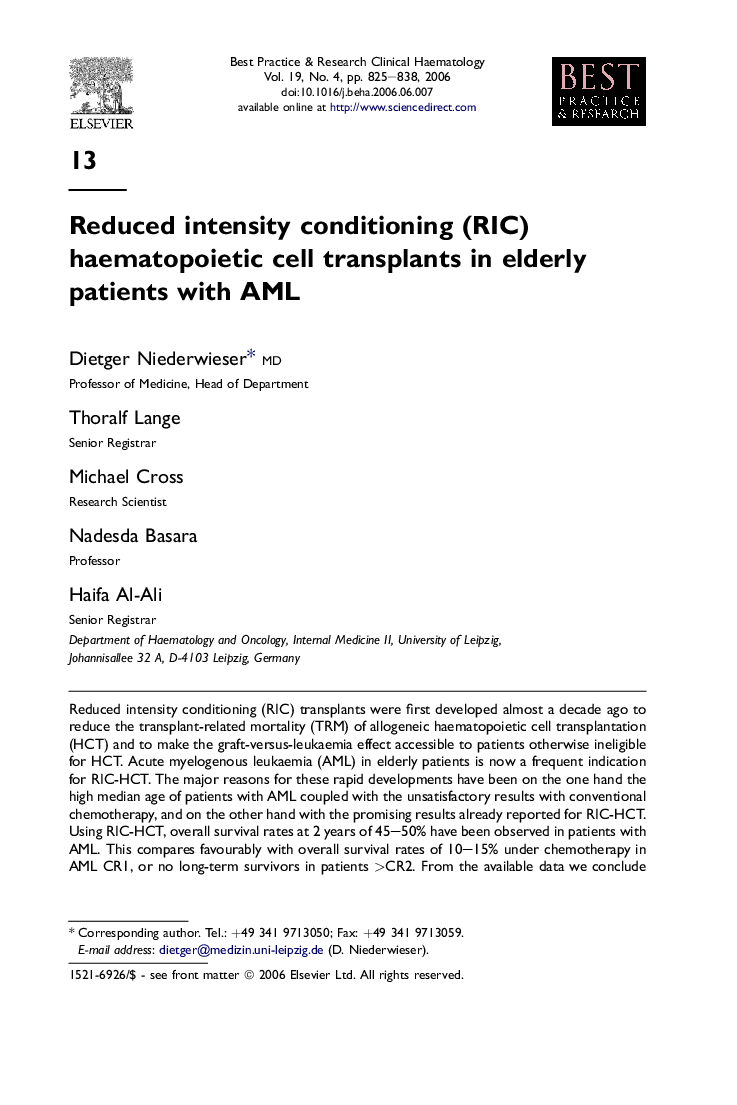| Article ID | Journal | Published Year | Pages | File Type |
|---|---|---|---|---|
| 2100610 | Best Practice & Research Clinical Haematology | 2006 | 14 Pages |
Reduced intensity conditioning (RIC) transplants were first developed almost a decade ago to reduce the transplant-related mortality (TRM) of allogeneic haematopoietic cell transplantation (HCT) and to make the graft-versus-leukaemia effect accessible to patients otherwise ineligible for HCT. Acute myelogenous leukaemia (AML) in elderly patients is now a frequent indication for RIC-HCT. The major reasons for these rapid developments have been on the one hand the high median age of patients with AML coupled with the unsatisfactory results with conventional chemotherapy, and on the other hand with the promising results already reported for RIC-HCT. Using RIC-HCT, overall survival rates at 2 years of 45–50% have been observed in patients with AML. This compares favourably with overall survival rates of 10–15% under chemotherapy in AML CR1, or no long-term survivors in patients >CR2. From the available data we conclude that RIC-HCT is a promising treatment for elderly patients with AML. However, phase-III studies with unrelated donors will have to be done in order to formally prove its superiority in comparison to conventional chemotherapy.
